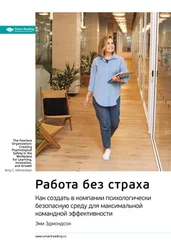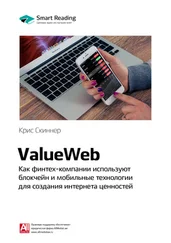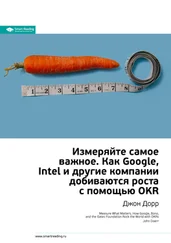Maltin, L. 1987. Of mice and magic: A history of American animated cartoons. New York: Plume, cited in Bryman, A. 1997. Animating the pioneer versus late entrant debate: An historical case study. Journal of Management Studies 34, 3, 415–438.
Westney, D. E. 1987. Imitation and innovation: The transfer of Western organizational practices to Meiji Japan. Cambridge: Harvard University Press.
Nowell, L. 2009. Interview with author, January 12.
Apollonius of Tyana, as told by Philostratus. Cited in Gombrich, E. H. 2002. Art and illusion: A study in the psychology of pictorial representation. New York: Phaidon.
Mitchell, R. W. 1987. A comparative-developmental approach to understanding imitation. In Perspectives in ethology, vol. 7, eds. P. P. G. Bateson and P. H. Klopfer. New York: Plenum, 183–215.
Levitt, T. 1966. Innovation and imitation. Harvard Business Review, September — October, 63–70.
Schewe, G. 1996. Imitation as a strategic option for external acquisition of technology. Journal of Engineering and Technology Management 13, 55–82, cite on 73.
Daley, C. 2008. Interview with author, November 18.
Nowell, L. 2009. Interview with author, January 12; Fischer, A. 2008. Interview with author, March 24; Wexner, L. 2008. Interview with author, October 2.
Dyer, H. 1904. Dai Nippon: A study in national evolution. London: Blackie and Sons, 425–426, cited in Westney, D. E. 1987. Imitation and innovation: The transfer of Western organizational patterns to Meiji Japan. Cambridge: Harvard University Press.
Quiamzade, A. 2007. Imitation and performance in confrontations between competent peers: The role of the representation of the task. European Journal of Psychology of Education 22, 3, 243–258.
Kohrt, C. 2008. Interview with author, March 5; Cloyd, G. 2009. Interview with author, February 4; Vriends, S. 2008. Interview with author, June 24; Shackelford, D. 2008. Interview with author, March 31.
Henderson, R. M., and Clark, К. B. 1990. Architectural innovation: The reconfiguration of existing product technologies and the future of established firms. Administrative Science Quarterly 35, 9–30.
Nowell, Interview with author; Wexner, Interview with author.
Diamond, J. 2005 (1997). Guns, germs and steel. New York: Norton.
Levitt, Innovation and imitation, 69, 70.
Wexner, Interview with author.
Bandura, A. 1977. Social learning theory. Englewood Cliffs, NJ: Prentice-Hall.
Daley, Interview with author.
Cloyd, Interview with author.
Shackelford, Interview with author.
Miner, A. S., and Haunschild, P. R. 1995. Population level learning. In Research in organizational behavior, eds. В. M. Staw and L. L. Cummings. Greenwich, CT: JAI Press, 115–166; Haunschild, P. R., and Miner, A. S. 1997. Modes of interorganizational imitation: The effects of outcome salience and uncertainty. Administrative Science Quarterly 42, 3, 472–500; Korn, H. J., and Baum, J. A. 1999. Chance, imitative and strategic antecedents to multimarket contact. Academy of Management Journal, 42, 2, 171–193; Cullen, M. F. 2003. Experience, imitation, and the sequence of foreign entry: Wholly owned and joint-venture manufacturing by South Korean firms and business groups in China, 1987–1995. Journal of International Business Studies 34, 185–198; DiMaggio, P. J., and Powell, W. W. 1983. The iron cage revisited: Institutional isomorphism and collective rationality in organizational fields. American Sociological Review 48, 147–160; Henisz, W. J., and Delios, A. 2001. Uncertainty, imitation, and plant location: Japanese multinational corporations, 1990–1996. Administrative Science Quarterly 46, 443–475.
Miner, A. S., and Haunschild, P. R. 1995. Population level learning. In Research in organizational behavior, eds. В. M. Staw and L. L. Cummings. Greenwich, CT: JAI Press, 115–166; Haunschild, P. R., and Miner, A. S. 1997. Modes of interorganizational imitation: The effects of outcome salience and uncertainty. Administrative Science Quarterly 42, 3, 472–500; Korn, H. J., and Baum, J. A. 1999. Chance, imitative and strategic antecedents to multimarket contact. Academy of Management Journal 42, 2, 171–193; Cullen, M. F. 2003. Experience, imitation, and the sequence of foreign entry: Wholly owned and joint-venture manufacturing by South Korean firms and business groups in China, 1987–1995. Journal of International Business Studies 34, 185–198; DiMaggio, P. J., and Powell, W. W. 1983. The iron cage revisited: Institutional isomorphism and collective rationality in organizational fields. American Sociological Review 48, 147–160; Henisz, W. J., and Delios A. 2001. Uncertainty, imitation, and plant location: Japanese multinational corporations, 1990–1996. Administrative Science Quarterly 46, 443–475; Westney, Imitation and innovation: The transfer of Western organizational patterns to Meiji Japan.
Higgs, P. G. 2000. The mimetic transition: A simulation study of the evolution of learning by imitation. Proceedings: Biological Sciences 267, 1450, 1355–1361; Zentall, T. A. 2006. Imitation: Definitions, evidence, and mechanisms. Animal Cognition 9, 335–353.
Huber, G. P. 1991. Organizational learning: The contributing process and the literatures. Organization Science 2, 88–115; Miner and Haunschild, Population level learning; White, H. C. 1981. Where do markets come from? American Journal of Sociology 87, 517–547; Porac, J. F, Thomas, H., Wilson, F, Paton, D., and Kanfer, A. 1995. Rivalry and the industry model of Scottish knitwear producers. Administrative Science Quarterly 40, 203–229.
Pfeffer, J., and Sutton, R. I. 2006. Harvard Business School Working Knowledge, based on the authors’ The knowing-doing gap. Boston: Harvard Business School Press, 2000; Huber, Organizational learning: The contributing process and the literatures; Miner and Haunschild, Population level learning; White, H. C. 1981. Where do markets come from? American Journal of Sociology 87, 517–547; Porac, Thomas, Wilson, Paton, and Kanfer, Rivalry and the industry model of Scottish knitwear producers; Levinthal, D. A., and March, J. G. 1993. The myopia of learning. Strategic Management Journal 14, 95–113; Baum, J. A. C, Li, S. X., and Usher, J. M. 2000. Making the next move: How experiential and vicarious learning shape the locations of chains’ acquisitions. Administrative Science Quarterly 45, 766–801; Rosenberg, № 1976. Perspectives on technology. New York: Cambridge University Press; Rosenberg, № 1982. Inside the black box: Technology and economics. New York: Cambridge University Press, cited in Schmitz, J. A. 1989. Imitation, entrepreneurship, and long-run growth, journal of Political Economy 97, 3, 721–739.
Читать дальше
Конец ознакомительного отрывка
Купить книгу












